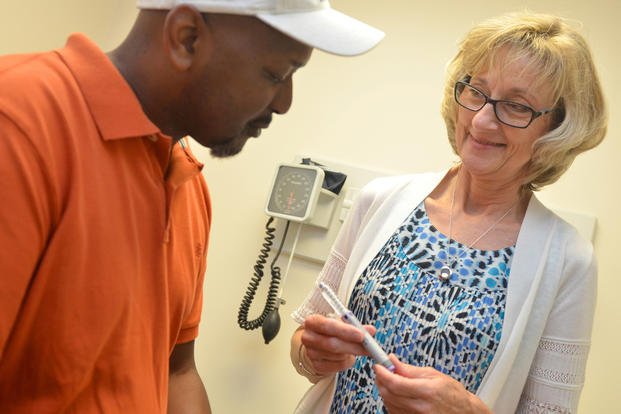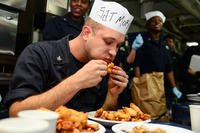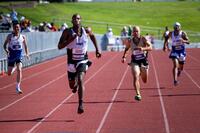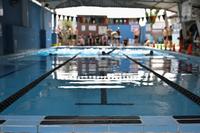I received several emails about helping a reader repair their diet. Here is a "Diet Plan" I refer people to with a motivating and humorous picture, as well as a free downloadable sample week of diet information. I also have a newer plan called the "Get Lean Diet" that is very effective. Also see my "Food Plan" (Word document) for more ideas. However, you should visit a registered dietician if you are severely overweight or pre-diabetic.
Pre-diabetic refers to Type II diabetes and usually occurs in older and/or obese people who do not have to have a family history of diabetes. Eighty percent of Type II diabetics are overweight. This type of diabetes can be prevented or significantly delayed by watching processed sugar intake, adding fiber-rich foods and exercising daily.
Here is the related question. A former Army soldier writes:
"My doctor says my blood sugar is too high and I have tried exercise, a no carbohydrate diet and am having trouble keeping my blood sugar and my weight down."
I am not a doctor, but there are still two areas you need to focus on. The fact that you stated your sentence in the past tense causes me to ask: Are you still fairly active and exercise regularly? Daily? And are you watching the portions and types of foods you are eating?
You can have high blood sugar because you are eating foods or soft drinks or juices with sugar in them. It could be as simple as adding more fiber to your diet by eating fiber-rich fruits and vegetables. But it can be fairly complicated, as well as your body can make glycogen (blood sugar) out of just about anything.
Glycogen is your go-to fuel source and sometimes is referred to as blood sugar. It is used for major bodily functions and high-intensity workouts. It is made from glucose, which is found in almost every food, and is converted into energy. Your insulin and/or exercise helps you regulate that blood sugar, and if insulin does not work or you are not exercising regularly, you can continue to have issues with high blood sugar.
Properly timed eating and exercise will allow you to burn the blood sugar before it has a chance to turn to fat, and it will burn your stored fat as well, thus causing a weight loss.
The two areas to focus on for at least 3-4 months faithfully are:
1. Food Intake
To control your high blood sugar, you have to watch your intake of carbohydrates -- true -- but you do not have to eliminate them as required by the Atkins Diet. High-sugar sodas, fruit drinks and processed foods are bad, but carbohydrates in fruits and vegetables that are also high in fiber are good fuel sources for your body, so do not eliminate them from your diet.
2. Exercise
There are two types of exercise -- aerobic and anaerobic. Aerobic means "with oxygen" and refers to exercise that maintains a level of activity capable of moving oxygen through your lungs, blood, heart and to your muscles. This is a great fat-burning zone and requires you to keep your heart rate at 50%-70% of your max heart rate, which is theoretically 220 minus your age (220 - age). Keep it at a conversational pace, meaning being able to talk, but it is not that easy to talk and breathe regularly.
Anaerobic means "without oxygen" and refers to exercise that causes the heart to race in the 70%-90% range of your maximum heart rate and includes sprinting while running, biking, swimming and even weight training or high-repetition calisthenics exercises (resistance training). Your heart and lungs cannot keep up with the demand for oxygen your muscles are placing on them, so you will tire out fast but burn a significant amount of blood sugar (glycogen).
So back to the Army soldier's question. Start exercising every day by doing something.
Along with weight loss, your goal will be to begin a program of physical activity, if you are not exercising regularly now. Physical activity will help you use the insulin you produce to convert the food you eat into energy. This will help keep your blood glucose lower. A great example: It is always a good idea to follow a meal with a brisk walk.
More tips:
-
Choose a variety of foods from all food groups.
-
Limit sugar and sweets.
-
Reduce the amount of fat you eat.
-
Include foods high in fiber.
-
Limit salt, alcohol and caffeine.
-
Choose heart healthy fats such as canola and olive oil.
-
Eat at regular times.
If you can make sure your exercise combines aerobic and anaerobic activity every day, then you will have a better chance of lowering your blood sugar. And you need to make sure your refined sugar intake is limited.
The bad news is this. Many people with Type 2 diabetes find that despite their best efforts, weight control, exercise and diet aren't enough to keep their blood sugars in a healthy range. One theory is that some people's insulin-producing cells are resistant to the effects of insulin. So try to focus on the above recommendations for at least three months. Go to your doctor again and talk about the possibilities of treatment options for diabetes.
Related article:
Stew Smith is a former Navy SEAL and fitness author certified as a Strength and Conditioning Specialist (CSCS) with the National Strength and Conditioning Association. Visit his Fitness eBook store if you're looking to start a workout program to create a healthy lifestyle. Send your fitness questions to stew@stewsmith.com.
Want to Learn More About Military Life?
Whether you're thinking of joining the military, looking for fitness and basic training tips, or keeping up with military life and benefits, Military.com has you covered. Subscribe to Military.com to have military news, updates and resources delivered directly to your inbox.



















